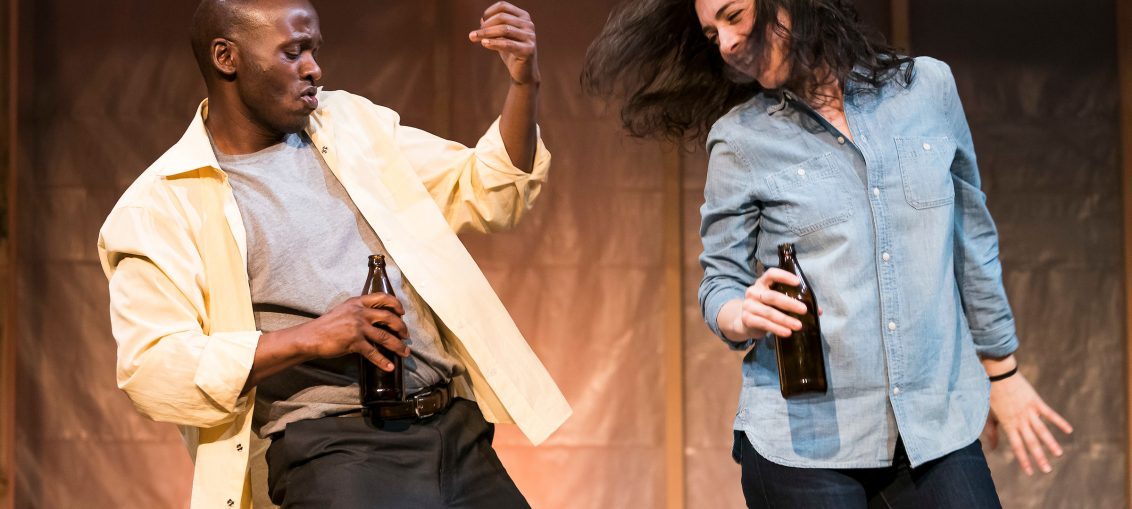

The two hardest types of theatrical production to pull off are polar opposites in complexity. On the one hand, there is the classic Broadway musical that requires a range of talents and has so many moving parts that it’s a miracle any of them succeed. On the other, there is the simple play involving two people just talking, which is difficult because so much hinges on so little – just words as they are delivered. Will Snider’s “Death of a Driver” is clearly of the latter class, and it is largely successful in delivering the words with a punch.
Sarah (Sarah Baskin) is an American engineer in Kenya, whose driver Kennedy (Patrick J. Ssenjovu) becomes her friend and right-hand man as she builds roads in her adopted country over the space of many years. They grow close as two friends can be. Kennedy names his first child after his employer, and she puts him in charge of the day-to-day operations of her project. They spend a great deal of time drinking beer and talking about life and love. Yet as we reach the end of the show, there is a falling out that suggests they never really knew everything about one another. Were they ever friends and what is a friend anyway?
Baskin and Ssenjovu have two things that are essential to making such a play work. First, both are fine actors. I know female engineers like Sarah. Baskin creates an individual character out of an archetype we all carry in our heads and plays the laughs and the tears with equal deliberation. Ssenjovu takes the driver and creates an extremely likable, three-dimensional man of ambition. The second thing that makes this work is their chemistry. I would wager heavily that the two of them hang out when they aren’t in a theatre. It isn’t just a case of two gifted actors performing their roles, but of two gifted actors performing as a team.
Kim T. Sharp directs and has opted for a simple set of milk crate chairs and beer bottles. It is austere in the extreme and emphasizes the performances. There is nothing distracting from Sarah, Kennedy and their friendship. Snider’s script deftly moves across the years in a few scenes of a few minutes each, and yet, nothing seems to be left out.
The final scene is one that needs some kind of re-crafting, however. In it, Sarah has returned to Kenya to receive an award, and she and her new driver (also played by Ssenjovu) drink beer and talk about the road she built and her friend Kennedy. Some kind of resolution is needed to be sure, but giving the role of the new driver to Ssenjovu (financially prudent, I acknowledge) is mildly confusing. More importantly, though, the scene lacks a clear direction. Instead, the scene wanders and gets a bit lost on the way to the final curtain.
Whether Snider chooses to alter the ending or not, one cannot help but leave the theatre impressed by the power of the show’s simplicity and by the surgically precise execution.
Running Time: 85 minutes without intermission.
“Death of a Driver” runs through March 24, 2019, at Urban Stages, 259 West 30th Street, New York City. For more information, visit the theatre’s web page devoted to the show.
 Sunday, December 14, 2025
Sunday, December 14, 2025